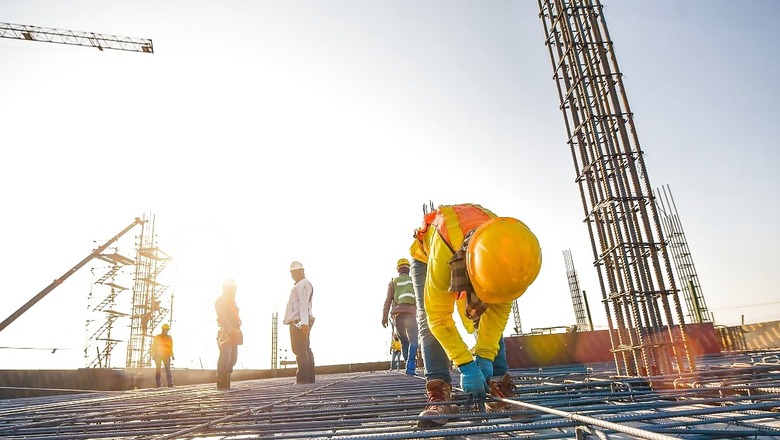
views
Imagine a shift in the construction game. The iron rods or ‘sariya’ you are accustomed to could be replaced with products crafted from stubble (parali) and other agricultural waste.
However, whether this transformation takes place depends on the real estate industry embracing the decade-long project by the Indian Institute of Technology (IIT), Delhi. To solve the problem of stubble burning in Punjab and Haryana, IIT-Delhi has been working on a project to push the use of agri-residue to manufacture construction materials. The overall aim of the project is to reduce the carbon footprint to which construction activities are the main contributor.
The institute is in talks with the Bureau of Indian Standards (BIS) to frame the standards for the real estate industry. Alongside, IIT is talking with builders and real-estate developers for the adoption of technology.
“We are working to find solutions for the problem of air pollution in Delhi-NCR due to stubble burning and also, greenhouse gas emission caused due to the production of steel and other synthetic construction materials,” Vasant Matsagar, professor and head of the project at IIT Delhi, told News18.
While the team has been working on a project to convert agro-residues into bio-composite construction materials for the last four years, the institute has been working to create non-metallic reinforcements (sariya) for the last 15 years.
For instance: Under the programme, the team has created greener materials to replace steel reinforcements or ‘sariya’ with more sustainable materials.
“Similarly, beams, slabs, and columns have also been readied by the team of researchers by making use of green materials, replacing the otherwise polluting construction materials.”
Moreover, Matsagar said locally available agro-residues are being converted into useful construction materials at local levels, likely by the farmers themselves, which avoids transportation costs of raw materials and finished goods, apart from job creation in villages.
“Even the residues from the production of bio-composites are used in making silica brick walls and all-weather road construction, especially in rural parts of the country.”
Acceptance remains challenging
While greener options have been created and tested, the biggest challenge is the adoption of the technology by construction companies and builders.
Over time, Matsagar said the cost of using greener, bio-composite options is likely to be about half to one-third of the already available material, which is steel and iron. “Such cost-effectiveness depends on the production-utilisation cycle.”
To push acceptance among the industry, IIT-Delhi is now in talks with BIS to develop new standards for the use of fibre-reinforced materials for concrete structures that are green construction materials.
“Parallelly, we are also in talks with big players in the construction industry to promote the adoption of such sustainable materials,” he said, adding that several workshops with industry stakeholders are being conducted to promote the technology in the construction industry.
Some of the developers attending workshops organised by the researchers and postgraduate students running the project include Supertech, Sanrachna Structural Strengthening Pvt Ltd and Direndra Group of Company.

















Comments
0 comment